The best natural hot springs in Iceland
No visit to Iceland would be complete without dipping a toe in the country’s spirit-lifting geothermal springs. Idling in steamy water is more than a wellness trend – it’s a cultural tradition.
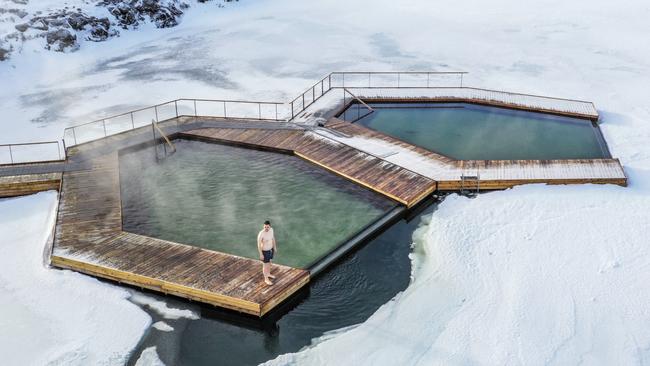
Sinking into the Geosea Geothermal Sea Baths, a series of cloud-shaped infinity pools on a clifftop overlooking northern Iceland’s Skjálfandi Bay, feels like receiving gentle shock therapy. Barely 20 minutes ago, my girlfriend and I were on a RIB speedboat on the fjord, perishingly cold despite Michelin Man oversuits, watching the white tail of Snowflake the humpback whale slide serenely into the greyish water.
Now it’s as though every goosebump has been enlivened in the 39-degree water of the gently steaming baths, heated by a natural spring nearby where hot water bubbles up from Iceland’s fiery volcanic core. For all the shock, the feeling is of exquisite serenity. Everyone drifts around silently, peering over the waterfall that runs off the cliff into the fjord where a posse of fulmars has gathered to shelter from the wind and bask in the warmer water of the falls. A beanie-hatted mother tenderly bobs her toddler, as if performing a baptism; an older couple sit by the edge, eyes closed, comfortable in each other’s silence; a group of younger men drink Gull beer in the raised bath by the swim-up bar.

Over years of coming to Iceland, this tingly peacefulness has become a defining feeling of being here, whether bathing in public pools, volcanic run-off water or rudimentary baths dug out by local farmers. Fed by limitless geothermal energy, Iceland is a land of hot water. Not just the 160-plus public pools with hot tubs in even the smallest villages, but the countless natural springs across the island, many of them closely guarded secrets like treasure marks on a pirate map.
The hot bath is to Icelanders what the sauna is to the Finns: part of the culture, and as much about community as wellness; especially so given that beer was banned here until 1989, making the tub a kind of proxy for the pub. I once interviewed Jón Gnarr, the comedian who was mayor of Reykjavík between 2010 and 2014. After coming to power on a joke pledge to offer free pool entry and towels, he told me that his constituents would get as angry about pool closures as about Iceland’s post-crash economic problems.
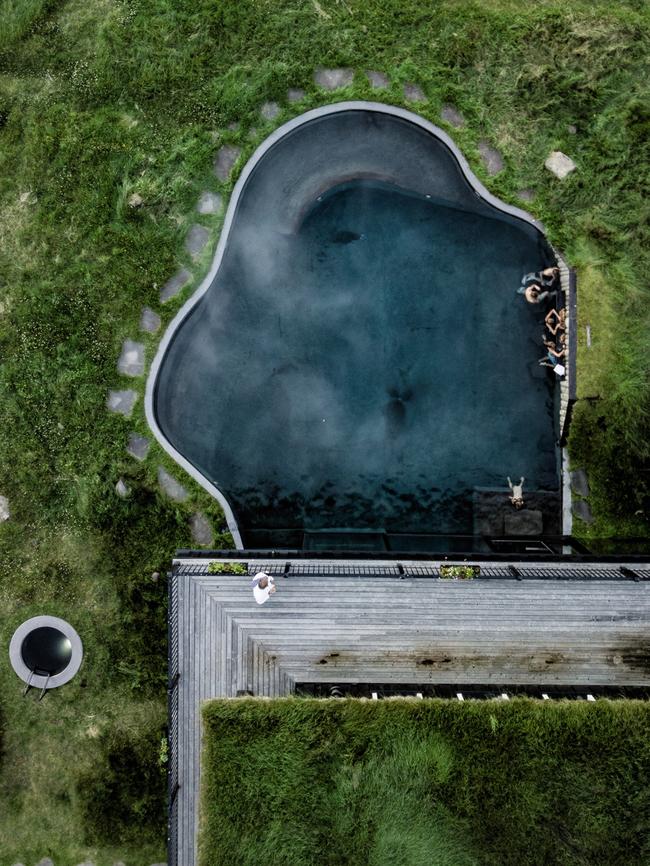
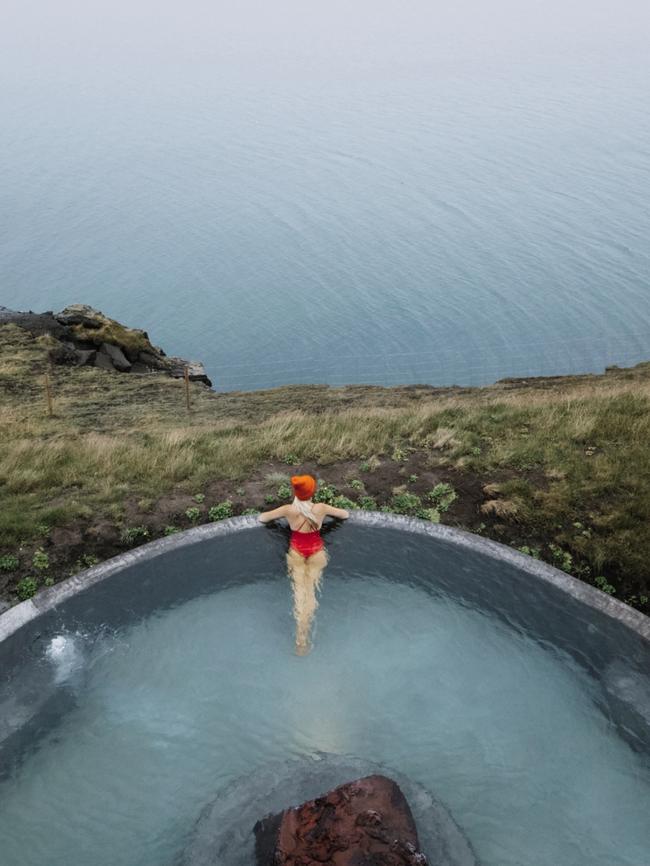
-
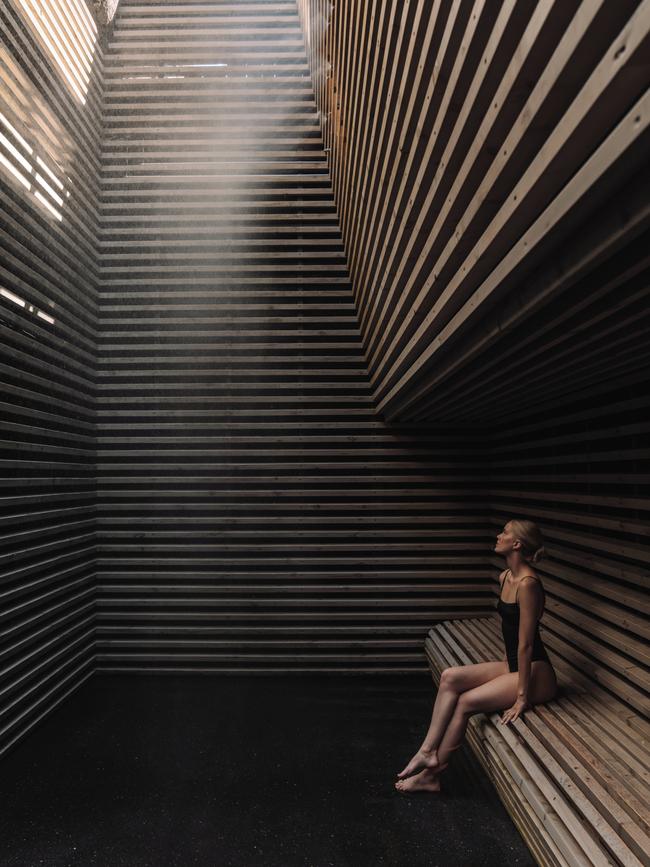
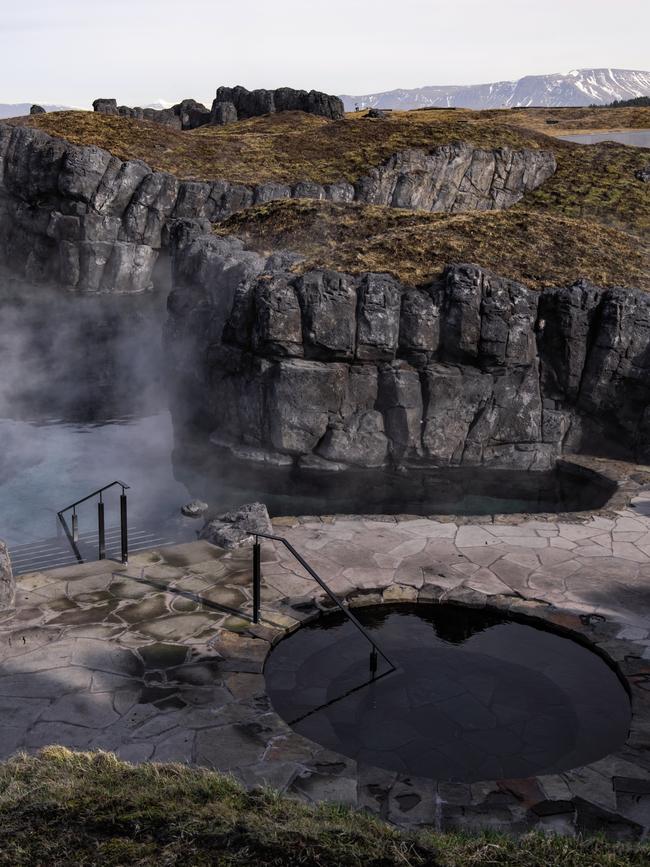
What’s changed, as tourism has boomed, is the arrival of a new breed of privately owned, architect-designed pools that resemble boutique hotel spas, including Geosea, which opened in 2018 and is built almost invisibly into the landscape north of little Húsavík, a fishing town known for whale-watching and Will Ferrell’s tongue-in-cheek Eurovision movie. The pool was masterminded by Basalt Architects, a Reykjavík firm co-founded by the no-nonsense Sigríður Sigþórsdóttir, who led the original design of the Retreat at Blue Lagoon Iceland in 2018. Making an attraction from the byproduct of a nearby geothermal power station was dismissed as outlandish at the time, but it became a blueprint for a type of design defined by clean-lined concrete and sensitivity to the landscape.
Many of Basalt’s other designs are built into hillsides, inspired by traditional Icelandic turf houses, including the Hofsós infinity pool on North Iceland’s Troll Peninsula and the newer Vök Baths, jutting out onto the Urriðavatn lake in the less-explored east. While the Blue Lagoon on the southern Reykjanes Peninsula has always been a tourist attraction, many of these pools are used primarily by Icelanders, who until recently made do with publicly funded local pools defined by rickety flumes rather than geometric timber.
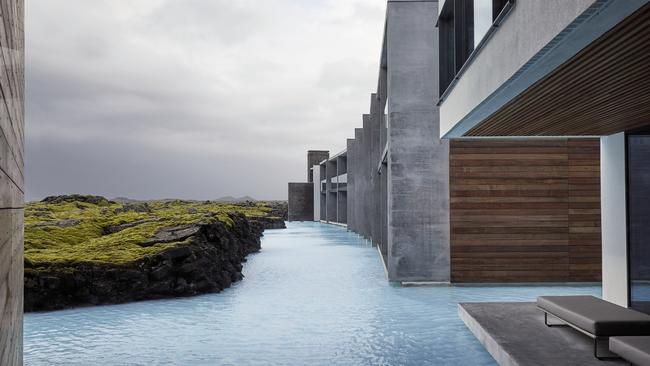
Health is a key appeal. A few years ago, in the sunken concrete hot bath at the man-made Nauthólsvík Geothermal Beach in Reykjavík, I sat next to Haukur Bergsteinsson, an 85-year-old drinking tea after his daily 300-metre swim across the bay in a lime-green swim cap. That had been his 1,600th swim there – always following the exercise with a hot soak. Haukur had taken up swimming after a cancer diagnosis, and swore that his chilly dips had cured him. “As I slowly built up the distance I swam across the bay, I felt my symptoms disappear,” he told me. “It felt like I was being reborn. Every day, after the cold, I sit in the hot bath and I feel so fresh and vital.”
This trip, from Reykjavík to Húsavík, is the first time I consciously embrace the cold as well as the heat – inspired partly by a Viking sauna ritual at Eleven Deplar Farm lodge in the far north, involving 15-minute sessions in a 100-degree sauna followed by icy minute-long dips in a two-degree plunge pool. For all the electric numbing buzz of the cold – curiously close to the feeling of burning – I manage to control my breathing and lean into the mind-clearing discipline of it. At every new venue, I try to spend a minute in the cold pool, which seems to rearrange my brain and body cells and attune me to the natural world beyond the baths. Never mind the immunity-boosting science espoused by Dutch motivational speaker Wim Hof – I just feel cleaner and more embodied.
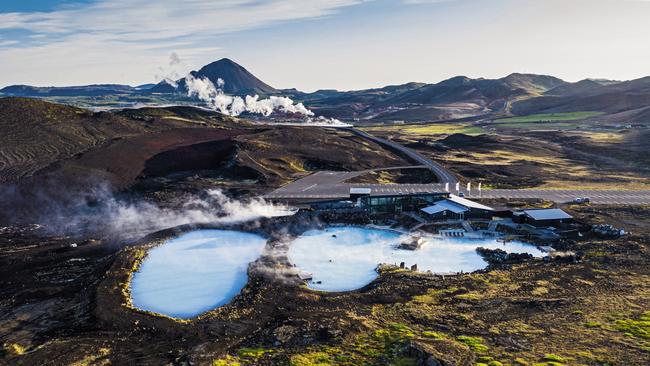
The pools are also about straightforward pleasure. On a Saturday evening we find ourselves at the Forest Lagoon, another Basalt creation, which opened last spring in the woods across the water from Akureyri, Iceland’s adventure-oriented northern second city. As the sky darkens and the occasional plane rumbles into tiny Akureyri airport on the other side of the Eyjafjörður, there’s a general sense of merriment in the soft-lit pool, overlooked by wood and glass cuboid modernist structures. In the steam and near-celestial light, families are slowly replaced by couples and groups of friends, chatting and drinking wine.
On our last night in Reykjavík, the hedonism is dialled up at the Sky Lagoon, a splashy new competitor to the Blue Lagoon, which seems to appear from nowhere on the edge of an industrial park to the south of the city. Designed by Reykjavík-based Tark Architects and opened in 2021, it is more shamelessly futuristic than Basalt’s unobtrusive designs. We leave the crisp changing rooms, soundtracked by low Nils Frahm-style beats, for a cold, dark evening and a waterworld enveloped by looming hunks of volcanic rock. Middle Earth waterways lead to a dramatic 75-metre infinity edge lookout, where the twinkle of semi-industrial Reykjavík cedes to sea, with the Fagradalsfjall volcano in the distance. The Seven-Step Ritual – an icy plunge, a warm bathe, sauna, cold mist shower and exfoliating scrub followed by a steam room – happens in a turf-covered space, like a Hobbit house from the 2040s, with nothing but dark sea visible from the picture-window sauna. We are deposited back into the main pool with softer skin, to float around black rocks and submerge in the watery silence, watching the steam dissipate and become one with the cold night sky.
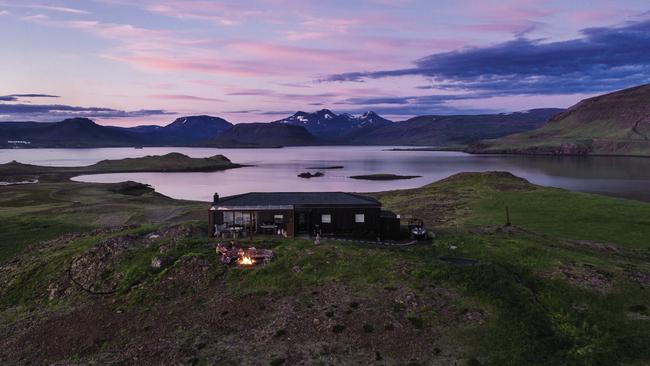
Bathing beauties
Forest Lagoon, Akureyri: Just south of Iceland’s outdoorsy northern second city, Forest Lagoon has the feel of a discreet glassy modernist home in the Vaðlaskógur woods, across the fjord from the airport. Icelandic Basalt Architects designed the trademark turf-roofed timber main building and pool around existing trees, with everything, including the angular sauna building, feeling immersed in nature. Entry from around $75. forestlagoon.is
Geosea, Húsavik: A series of circular infinity pools and a sauna on a cliff edge just north of the whale-watching town of Húsavík. The view across the Skjálfandi Bay is the star of this crisply architectural pool: concrete and pillars built into a little grassy hillock next to the bright-yellow Húsavíkurviti lighthouse. Sometimes humpbacks are visible from the 39-degree baths. Entry from about $70. geosea.is
Sky Lagoon, Reykjavik: It cost upwards of $40 million to build the future-facing Sky Lagoon, a showy alternative to the Blue Lagoon, which finally opened in 2021 in Kársnes Harbour, Kópavogur. Waterways overlooked by high rocks lead to a 75-metre infinity pool that inspires countless selfies, a turf-roofed wellness area with a picture-window sauna, exfoliating steam scrubs and more. Entry from about $75. skylagoon.com
Vök Baths, Egilsstadir: Another Basalt design with turf-roofed buildings that are barely visible from the road, the Vök Baths are defined by floating six-sided infinity pools jutting into the Urriðavatn lake (the name comes from the parts of the lake that, curiously, don’t freeze in winter). A cold mist shower, steam room and dips in the lake provide hot-cold therapy. Entry from about $78. vokbaths.is
Mývatn Nature Baths in the steaming, spectacular north-east is a slower-paced equivalent of the Blue Lagoon. Grettislaug, a few baths dug by a farmer on a Troll Peninsula campsite, has a folkloric feel, like the newer Hvammsvík Hot Springs, which opened in 2022 an hour north of Reykjavík, with rocks built into the sea and cool rentable houses. For a classic public pool, the Vesturbæjarlaug is where Björk and the capital’s movers and shakers swim. And for a total immersion, The Retreat at Blue Lagoon is one of the country’s smartest stays, with access to private corners of the lagoon’s aquamarine waters surrounded by black lava.
CONDE NAST TRAVELLER

To join the conversation, please log in. Don't have an account? Register
Join the conversation, you are commenting as Logout